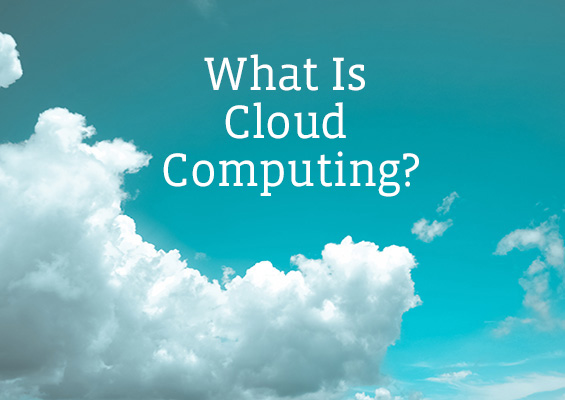
In the broadest of terms, it basically means using somebody else’s computing facilities, including servers, storage, software and so forth, rather than standing up and using real physical hardware in house, along with the operating systems and applications that make computers work.
This may sound subtle, or perhaps even silly, but the concept of using other people’s resources over the internet sits at the very core, not just of what cloud computing is and how it works, but also where and how cloud offers incredible value to those who use it.
The Amazing Value of Cloud Computing
The benefits of cloud computing are many and varied, but they can be boiled down to a handful of basic principles and practices:
- Use Only What You Need, When You Need It: If you buy your own equipment and software, you have to buy enough to handle all of your needs. This includes obtaining coverage for peak usage as well as everyday consumption of computing resources. In most businesses and organizations, peaks come only periodically. Cloud computing lets companies and organizations add more resources to cover peaks and then take them away when those peaks subside.
- Pay as You Go: If you use the resources, you must pay for them. But if you don’t use them, they cost nothing. This is the biggest value proposition for cloud computing, because it means that companies and organizations don’t have to buy extra capacity that sits idle outside of peak times.
- Skip the Lifecycle: By buying into cloud computing, you eliminate the need to research and evaluate hardware and software as well as undergoing lengthy trial, pilot and production deployments. There’s also no need to retire old hardware and software and replace it with new. If it’s in the cloud, these are all somebody else’s problem as well as somebody else’s resources.
- Switch CAPEX for OPEX: When you purchase cloud services, it’s a monthly service expense, much like paying for a utility or a subscription. There’s no need for capital expenditures (CAPEX), depreciation and amortization schedules, and the complex record keeping and reporting that goes with that. Instead, there’s a monthly charge for resources consumed, simply chargeable as a cost of doing business, or providing services, or whatever else is needed for expensing purposes – an operating expense (OPEX), in other words.
- Total Flexibility and Easy Entry into New Markets and Services: If you can envision a cloud-based environment, you can work with a cloud service provider to bring that vision to life (and to your customers or users). A few of the biggest names include Amazon Web Services, Google Cloud Platform and Microsoft Azure. With these services, it’s possible to spin up entire infrastructures to support new lines of business or to build them for limited but important uses (virtual labs for training, virtual showrooms for trade shows or exhibitions, special research projects or joint ventures) on an as-needed basis. This gives businesses and organizations huge room to move quickly, to experiment and to try things out without undue risk or extreme expense.
The real reason why cloud computing is so pervasive and popular nowadays is that it offers the best and most effective way to consume computing resources, period.
What “Over the Internet” Really Means
In 2018, the internet goes to most, if not all, of the 195 countries extant around the globe. But you wouldn’t want to go to Timbuktu to access a database from Des Moines, Iowa, just as you wouldn’t want to go to Manhattan to access storage from Mogadishu. There’s a lot of near-magic involved in making the cloud available to companies, organizations and users around our planet, not least of which is providing ample coverage to meet demand for the various regions in which computing services get consumed.
Certainly, the Des Moines-based database access would probably be best served in Des Moines itself, or perhaps nearby Omaha or Cedar Rapids, but probably not from technology hubs on either coast (like Silicon Valley, Seattle, Washington, D.C., or Atlanta). Cloud providers work hard and smart to situate their data centers at prime high-bandwidth internet locations so their customers don’t have to wait while their packets circumnavigate the globe hurrying into and out of their servers. Thus, “over the internet” or “in the cloud” really means “somewhere relatively nearby on the internet (and in geographical space) so that data and services can be delivered quickly and efficiently.”
This, too, helps to explain the allure and some additional value for cloud computing. A company or organization might have customers in major population centers around the country (or the globe) because that’s where most of the people are. By working with a cloud service provider who makes their cloud computing offering readily available in such places, the people who consume them are assured of a positive user experience when they venture into the cloud. Cloud providers work carefully to situate their servers where people can get to them quickly and easily, to access the data and services that the cloud delivers to their devices.
Validate your cloud computing skills with the new CompTIA Cloud+.
